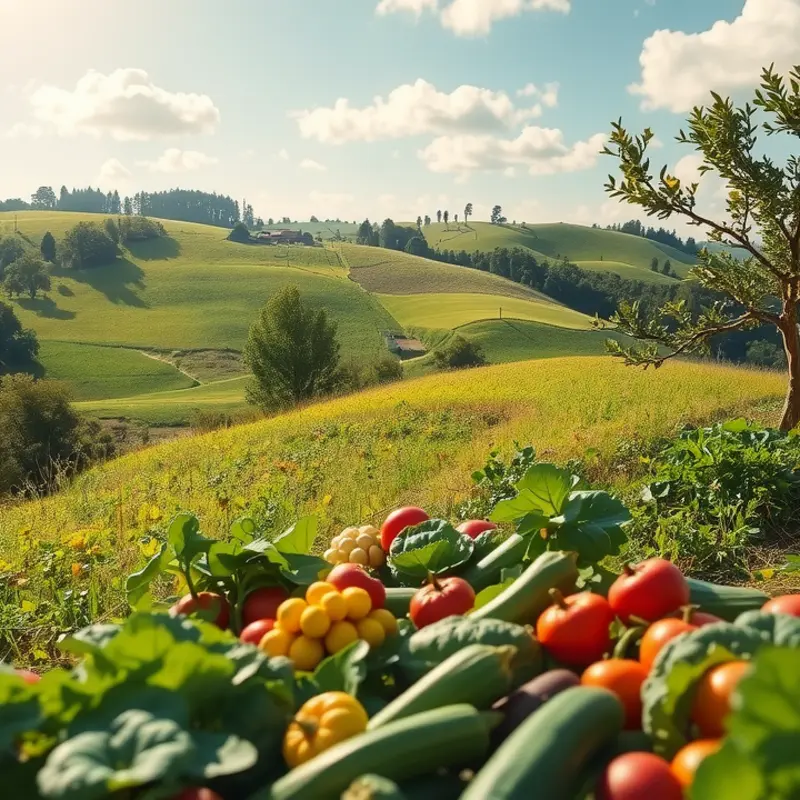Storing root vegetables properly is essential for maintaining their flavor, texture, and nutritional value. With a few simple techniques, you can extend their shelf life, reduce waste, and enjoy them longer. Embracing efficient storage solutions will not only keep your produce fresh but also enhance your overall food management practices at home.
Choosing the Right Storage Techniques

Understanding the subtle differences in how various root vegetables respond to storage techniques is crucial for extending their shelf life and preserving their nutritional value. For each type of root vegetable, specific storage conditions such as temperature and humidity play a pivotal role in maintaining freshness and minimizing waste. This chapter explores ideal storage practices for popular root vegetables like potatoes, carrots, and turnips.
Potatoes:
Potatoes thrive in a cool, dark, and well-ventilated area, which slows down sprouting and decay. Ideal storage temperatures range from 45°F to 50°F (7°C to 10°C). Exposure to light can lead to greening and solanine development, which is harmful if consumed in large quantities. Avoid storing potatoes in the fridge as the cold can convert their starches into sugars, affecting flavor and texture. Instead, use a mesh bag or a burlap sack to allow airflow.
Carrots:
Carrots prefer a slightly more humid environment to retain their crispness. Store them in the refrigerator at higher humidity levels, ideally around 90-95%. To increase their longevity, cut off the green tops before storage as the tops can draw moisture from the roots. You can also wrap carrots in a damp paper towel or store them in a perforated plastic bag to maintain moisture balance.
Turnips:
Turnips, like carrots, benefit from a cool and humid environment, making the refrigerator an ideal choice. Their storage temperature should be between 32°F and 40°F (0°C to 4°C) with about 95% humidity. Keeping turnips in the crisper drawer of your refrigerator with a damp cloth will help preserve their firmness and flavor. Removing tops before storage can further prevent moisture loss.
To master the art of storing these root vegetables efficiently, it is essential to consider suitable containers that allow for airflow, moisture retention, and protection from light. For more insights on maintaining an eco-smart kitchen setup, explore this eco-smart kitchen storage guide. This not only enhances the longevity of your vegetables but also contributes to a more sustainable lifestyle by reducing food waste.
By aligning the storage conditions to the specific needs of each root vegetable, you maximize both their freshness and nutritional value. While these techniques might seem simple, they are crucial in ensuring your produce sustains its quality over time. Through careful storage practices, you are not only able to reduce food waste but also to enjoy the full benefits of these nutrient-dense foods.
Long-term Preservation Strategies

When faced with an abundant harvest or a bulk purchase of root vegetables, mastering long-term preservation techniques is invaluable. These strategies not only preserve your stockpile but also retain nutrition and flavor. Let’s delve into some effective methods: freezing, canning, and fermenting.
Freezing:
Freezing is an excellent way to preserve the nutrients of your root vegetables. Start by washing and peeling the vegetables thoroughly. Blanch them by boiling briefly, then immediately cool them in ice water to help retain color and flavor. Blanching times vary, so be sure to research specifics for each vegetable. After blanching, dry them well, and pack in airtight containers or heavy-duty freezer bags. Be mindful of removing as much air as possible to prevent freezer burn. Store in a freezer at 0°F (-18°C) or lower for up to a year.
Canning:
Canning requires a bit more time and equipment but ensures long shelf life. For root vegetables, pressure canning is essential to eliminate bacteria without compromising nutrition. Start by peeling and cutting vegetables into uniform pieces. Pre-cook them by boiling, pack into sterilized jars, and cover with hot liquid—either water or a salt solution. Seal the jars with lids and process in a pressure canner. Follow specific pressure and time guidelines based on altitude to ensure safety. Once sealed, canned goods can remain fresh and wholesome for more than a year.
Fermenting:
Fermenting adds probiotics to your plate while preserving your bounty. Begin by slicing the root vegetables into thin pieces. Use salt brine—typically 2-3% salt solution—to submerge the vegetables in a glass jar. The absence of oxygen allows beneficial bacteria to thrive, transforming sugars into lactic acid. This method is straightforward; however, mind the fermentation environment. Store jars in a cool, dark place, and within a week to several months, you’ll have a tangy addition to meals that can last several months in the refrigerator.
Choosing the right preservation technique hinges on your available resources and dietary preferences. Each method retains vital nutrition and enhances flavor in its unique way. As you practice these preservation strategies, you’ll extend your culinary creativity and maintain a sustainable kitchen. For more tips on minimizing food waste, you can explore low waste cooking and prep strategies.
Final words
Properly storing root vegetables is not only essential for preserving their freshness and flavor but also a significant step towards minimizing food waste. By applying the discussed techniques, from selecting the right storage method to implementing long-term preservation strategies, you can enhance your kitchen’s efficiency and sustainability. These practices will not only benefit your meals but also support a conscious approach toward food management at home, ensuring that you make the most out of every harvest.







